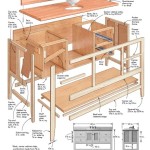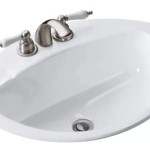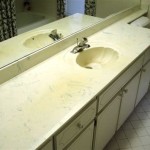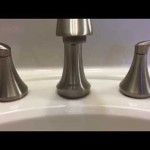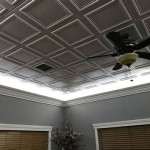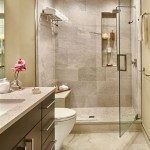Can I Mount A Bathroom Exhaust Fan On The Wall?
Bathroom exhaust fans are essential for maintaining a healthy and comfortable environment. They effectively remove excess moisture, preventing mold and mildew growth, reducing unpleasant odors, and improving air quality. Traditionally, these fans are mounted on the ceiling. However, situations arise where a ceiling installation is not feasible or ideal, prompting consideration of wall mounting. The viability of wall mounting a bathroom exhaust fan depends on various factors, including the fan design, bathroom layout, local building codes, and individual preferences.
Understanding the principles behind exhaust fan operation is crucial. These fans work by creating negative pressure, drawing air and moisture from the bathroom and expelling it outside. The placement of the fan significantly impacts its effectiveness. Ceiling-mounted fans typically excel at capturing rising steam and humidity due to their proximity to the source. Conversely, wall-mounted fans may require strategic placement to achieve similar results. The distance from the shower or tub, the overall bathroom size, and the airflow patterns within the room all play a role in determining the optimal location for a wall-mounted exhaust fan.
Before proceeding with any installation, it is imperative to consult local building codes and regulations. These codes often specify requirements for exhaust fan placement, ventilation rates (measured in cubic feet per minute, or CFM), and ducting materials. Some jurisdictions may have specific restrictions on wall mounting, particularly in relation to fire safety and moisture control. Failure to comply with these codes can result in fines, mandatory alterations, and potential safety hazards. Consulting a qualified contractor or building inspector can help ensure compliance and prevent future complications.
The selection of an appropriate exhaust fan is paramount for a successful wall-mounted installation. Not all exhaust fans are designed for wall mounting. Some models are exclusively intended for ceiling installation and may not function efficiently or safely when mounted on a wall. Look for fans specifically designated as "wall-mountable" or those with flexible mounting options explicitly stated in the product specifications. These fans typically feature designs that facilitate proper airflow and prevent moisture accumulation within the fan housing when installed on a vertical surface.
Key Considerations When Wall Mounting a Bathroom Exhaust Fan
Several factors need careful evaluation when considering a wall-mounted bathroom exhaust fan. These factors will influence the choice of fan, the installation process, and the overall effectiveness of the ventilation system.
Fan Design and Specifications: Examine the fan's design to determine its suitability for wall mounting. Look for models with a sealed housing to prevent moisture ingress and ensure safe operation. The fan's CFM rating should be appropriate for the size of the bathroom. Overly powerful fans can create excessive noise and energy waste, while underpowered fans may not adequately remove moisture and odors. Review the fan's specifications carefully, paying attention to the manufacturer's recommendations for mounting height and proximity to water sources.
Ducting and Ventilation: The ductwork connecting the exhaust fan to the outside vent plays a crucial role in the system's overall performance. The ducting should be smooth, rigid, and adequately sized to minimize airflow resistance. Flexible ducting, while easier to install, tends to restrict airflow and can accumulate dust and debris over time. The length of the duct run should be kept as short as possible, and sharp bends should be avoided. Consider using insulated ducting to prevent condensation and reduce noise transmission. Ensure the exterior vent is properly sealed to prevent backdrafts and the entry of pests and debris.
Electrical Wiring: Installing an exhaust fan involves electrical wiring, which should be performed by a qualified electrician. Ensure the electrical circuit is properly grounded and has the appropriate amperage for the fan's power requirements. Follow all applicable electrical codes and safety precautions. Consider installing a dedicated circuit for the exhaust fan to prevent overloading existing circuits. GFCIs (Ground Fault Circuit Interrupters) are often required in bathrooms to protect against electrical shock. Securely connect all wiring and protect it from moisture. A properly wired exhaust fan is essential for safe and reliable operation.
Challenges and Potential Drawbacks of Wall Mounting
While wall mounting offers an alternative to ceiling installation, it also presents certain challenges and potential drawbacks that should be carefully considered.
Reduced Efficiency: As mentioned earlier, ceiling-mounted fans are generally more effective at capturing rising steam and humidity. Wall-mounted fans may require strategic placement to compensate for this difference. Experiment with different locations to determine the optimal position for maximizing airflow and moisture removal. Consider using a fan with a higher CFM rating to compensate for any potential reduction in efficiency. Regular cleaning of the fan grill and surrounding area can help maintain optimal airflow.
Aesthetic Considerations: A wall-mounted exhaust fan may not be as aesthetically pleasing as a ceiling-mounted model, particularly if it protrudes significantly from the wall. Choose a fan with a sleek and unobtrusive design that complements the bathroom's decor. Consider painting the fan housing to match the wall color. Proper placement can also minimize the fan's visual impact. Carefully consider the overall aesthetics of the bathroom before deciding to wall mount an exhaust fan.
Noise Levels: Some wall-mounted fans can be noisier than ceiling-mounted models, especially if they are not properly insulated or if the ductwork is not properly installed. Choose a fan with a low sone rating to minimize noise levels. Sone is a unit of measurement for loudness. Consider using sound-dampening materials around the fan housing and ductwork to further reduce noise transmission. Proper installation techniques, such as using flexible connectors to isolate the fan from the ductwork, can also help minimize noise. Regular maintenance, such as lubricating the fan motor, can also help prevent excessive noise.
Alternatives to Wall Mounting
Before committing to a wall-mounted exhaust fan, it is worth exploring alternative solutions. These alternatives may offer improved performance, aesthetics, or ease of installation.
Ceiling-Mounted Fans with Remote Mounting: These fans have the fan motor and blower assembly located in a remote location, such as the attic, with only a small grille visible on the ceiling. This design reduces noise levels and can be more aesthetically pleasing. The remote location also makes maintenance easier. However, these fans typically require more complex ductwork and installation.
Inline Fans: Inline fans are installed within the ductwork, typically in the attic or crawl space. They are powerful and quiet, and they can be used to ventilate multiple bathrooms or other areas. Inline fans are a good option for larger bathrooms or for whole-house ventilation systems. However, they require more extensive ductwork and installation.
Ventilation Systems with Heat Recovery: These systems recover heat from the exhaust air and use it to preheat incoming fresh air. They are energy-efficient and can improve indoor air quality. Ventilation systems with heat recovery are a good option for homes in cold climates. However, they are more expensive and complex to install than traditional exhaust fans.
Window Fans: While not ideal for removing moisture directly from the shower, window fans can provide general ventilation and air circulation in the bathroom. They are easy to install and relatively inexpensive. However, they may not be as effective at removing moisture as exhaust fans.
Ultimately, the decision of whether to mount a bathroom exhaust fan on the wall should be based on a thorough assessment of the specific circumstances, considering the factors outlined above. Consulting with a qualified contractor or HVAC professional can provide valuable insights and help ensure a safe and effective installation. Proper planning and execution are key to achieving optimal ventilation and maintaining a healthy bathroom environment.

Ext External Mount Bathroom Fans Continental Fan

What Extractor Fan Do I Need For My Bathroom Blog World

How To Install A Bathroom Fan Step By Guide Bob Vila

Bathroom Exhaust Fans Types Uses Benefits And More

How To Install An Exhaust Fan In A Wall

Revent 50 Cfm Quick Install Professional Ceiling And Wall Mount Easy Roomside Bathroom Bath Exhaust Fan Rvp50 The Home Depot

4 Inch Exhaust Fan Wall Mounted Vent Fans Ventilation Extractor 110v Square Blower For Kitchen Bathroom Laundry Room Com

Elegant Bathroom Exhaust Fan Disappears When Not Needed

Bathroom Exhaust Fans The Complete Guide By Fanco

Invisible Fans Yanko Design Bathroom Exhaust Fan Extractor Wall Mounted
